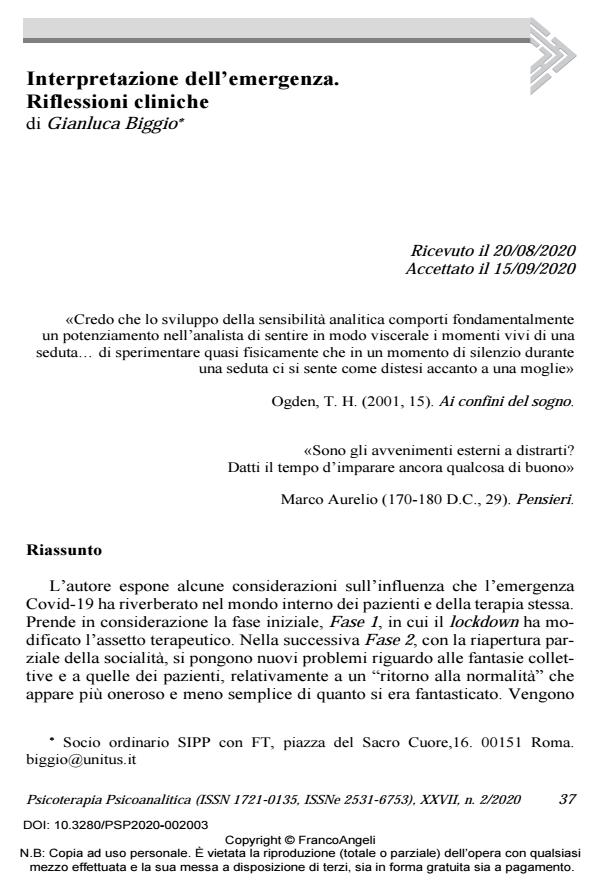Interpretation of the emergency. Clinical reflections during Covid-19
Journal title PSICOTERAPIA PSICOANALITICA
Author/s Gianluca Biggio
Publishing Year 2020 Issue 2020/2
Language Italian Pages 20 P. 37-56 File size 234 KB
DOI 10.3280/PSP2020-002003
DOI is like a bar code for intellectual property: to have more infomation
click here
Below, you can see the article first page
If you want to buy this article in PDF format, you can do it, following the instructions to buy download credits

FrancoAngeli is member of Publishers International Linking Association, Inc (PILA), a not-for-profit association which run the CrossRef service enabling links to and from online scholarly content.
The author supports some reflections on the influence that the Covid-19 emergency has brought on the internal world of patients and of the therapy itself. The initial phase is considered (Phase 1). During this period the lockdowdn changed the therapeutic structure. In the subsequent Phase 2, with the partial direct re-entry into social life, new problems arise with respect to collective fantasies and those of pa-tients. The “return to normality” appears more costly and less simple than one imagined and expected. The dream of a patient approaching the end of therapy during the block is reported; even in a remote ses-sion the dream gives rise to a sort of dreamlike intimacy shared be-tween patient and analyst. This intimacy is reflected in the analyst’s reverie upon awakening close to the session. A clinical flash is then re-ported of a patient resuming face-to-face sessions in Phase 2. The patient and the analyst are confronted with a recovery that turns out to be more complex than expected. The management of a reparative resump-tion of the therapy occurs between a feeling of fear and hope at the same time.
Keywords: Dream, rêverie, primary traumatic areas, re-constructions, psychic work, reparation.
Gianluca Biggio, Interpretazione dell’emergenza. Riflessioni cliniche in "PSICOTERAPIA PSICOANALITICA" 2/2020, pp 37-56, DOI: 10.3280/PSP2020-002003